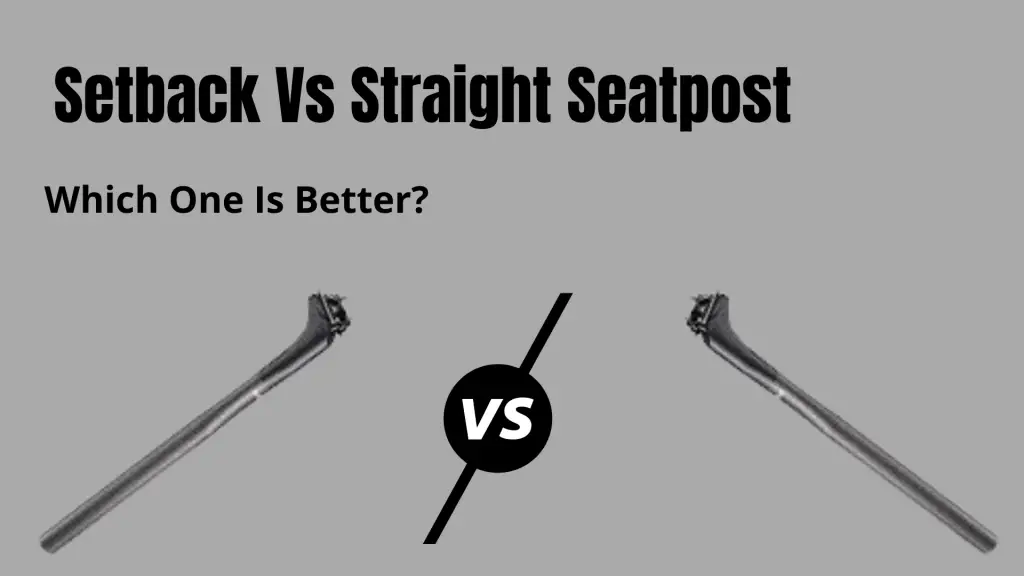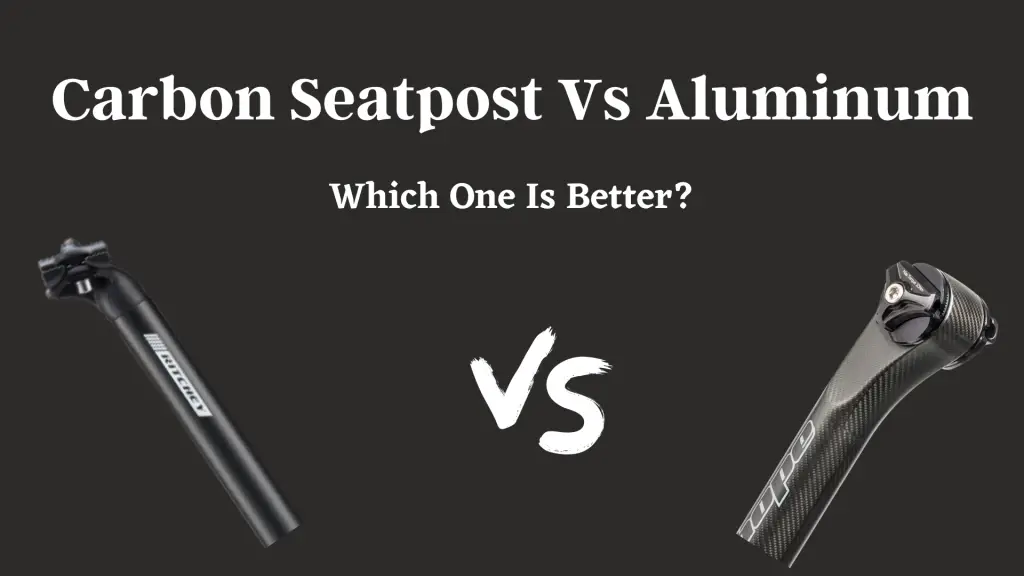Suppose, for a smooth ride, you need a better SAG and a reduced head angle. So you want to replace the stock fork of our bike.
Thus you may wonder whether it is possible to attach a 150 mm fork on 130 mm frame?
It is possible to attach a 150 mm fork with a 130 mm frame. Attaching a 150mm fork with a 130mm frame can give a slight performance boost to your mountain bike. Firstly, The SAG increases then the head angle reduces and the bottom bracket height increases. Thus you can ride the cycle even in any challenging environment.
To set up the fork, you must know the necessary info. Thus I am here to ease your trouble. I bring you this article with all the info you will be needing.
Let’s upgrade your ride then!
First Things First: Is It Possible?
Typically, attaching a longer fork can damage the frame. However, the 150 mm fork will not damage the 130 mm frame.
As long as the fork is 20mm higher than the current fork, you can use it. In fact, it is the golden rule that everyone follows while replacing their stock fork.
Source: zizmall.com
If the fork is longer than 20mm, the fork will be too big to fit on the frame.
And obviously, the 150 mm MTB fork definitely maintains this golden rule.
How to Add a 150mm Fork to a 130mm Frame?
Generally, a 150mm fork is bigger than a 130 mm frame. Thus adding it is not an easy thing. Unless you maintain some certain steps.
However, no need to worry. The whole process consists of only three things: detach, set, and install. Let’s see them!
Step 1: Detach
Firstly, you have to detach the current fork that you have. Plus, the suspension components.
To do so, remove the bottom bolts of the fork using a wrench. Consequentially the fork gets loose and you can detach it.
Now remove the dampers within the fork. Along with the damper remove the air shaft as well. Also, drain out the old suspension oil.
Last but not least, remove the air cap situated at the top of the fork.
Thus the first step ends.
Step 2: Mount The New Fork
In the previous step, you got rid of your old fork and suspension components.
Now it is time to attach the new 150 forks.
Source: ecmtb.net
Pass the fork through the frame tube shaft of the bike. Then connect it with the headset.
Finally, tighten up the bolts. And your fork has been upgraded.
Step 3: Reassemble The Parts
Whoa whoa, rider easy there. You may have installed the fork, but now you have to reassemble the suspension parts.
Firstly, put the dampers in the fork as well as add up new suspension oil. But don’t just put any suspension oil. Be sure to put some good quality suspension oil this time.
I’ve always found my bike just not working right. Right after I changed the brand of my suspension oil I noticed that the performance of the bike improved significantly.
Some of the suspension oils that I’ve found to work exceptionally well are:
| Image | Product Name | Price |
|---|---|---|
 | WPL Forkboost Lube | Buy Now |
 | RockShox Suspension Oil | Buy Now |
 | Finish Line 7.5wt Suspension Shock Oil | Click HereBuy Now |
The next thing that you need to do is to set the retaining ring in front of the damper.
Finally, tug the damper well so that it does not get loose. Now, set the air cap back.
This ends the whole installation process of the 150 mm fork.
See? It’s that easy!
Perks of Replacement
Basically, the geometry of the frame modifies to some extent if you use the 150 mm fork. Eventually, this enhances the overall performance of the bike.
Increased Stability
Your bike will remain more stable in the case of a 150 mm fork mount.
Well, a 150 mm fork is longer than the stock 130 mm fork. So, when you replace the stock fork, the head angle of the bike slackens.
As a result, the stability of the mountain bike increases. Moreover, it also makes the maneuvering of the cycle easy.
Thus you can ride the bike at higher speeds through the hilly areas.
Increased SAG
The increased length of the 150 mm travel fork increases the SAG of the bike. Generally, the SAG of the bike increases up to 35%.
The SAG improves the control of the bike. The increased SAG helps to ride the cycle on granular surfaces.
Thus you can attach a 150 mm fork instead of 130 mm. The maneuverability will increase.
Height of The Bottom Bracket Increases
Installing a 150mm fork on a 130 mm frame also increases the bottom bracket height of your mountain bike.
It helps to ride through hilly tracks more efficiently.
Your mountain bike can easily roll over logs and rocks with a longer fork.
So, the installment of a 150 mm fork will definitely help you to move your mountain bike, more freely!
Disadvantages of Installing 150 mm Fork
Undoubtedly, installing a 150 mm fork instead of 130 mm certainly gives a big performance boost.
However, there are a few disadvantages you will face as well such as oil leaking from fork.
So, before installing a 150 mm fork to a 130 mm frame, there are a few things you can think of.
The Frame Can Break
Although a 150 mm fork is safe to use with the 130 mm MTB frame. Still, there remains a possibility that the frame might break.
Source: pinkbike.com
The reason is, that a longer fork creates extra pressure on the frame. When you insert the longer fork at the head of the frame, it may get stressed. So, you need to be wary of this.
However, some companies sell frames that don’t get stressed. You can use the frame of those companies too!
Increased Stiffness
The 150 mm fork makes the control stiff. It makes it difficult to control the mountain bike at small distances.
You will find it hard to hard turns. Your mountain might skid on the track.
Brake Failure
A longer fork means, it is harder to pull the brake. So, a 150 mm fork at a 130mm trail bike frame will make the braking harder.
The 150 mm fork increases the height of the bottom bracket. As a result, when you pull the brake, you might lose control of the bike.
So, you have to maintain the elevation of the lower bracket.
If you elevate the bottom bracket at a proper height, then you won’t face any braking issues. Also, you can move smoothly on hilly tracks.
Therefore, know when you should and shouldn’t upgrade your fork. This video by MTB McPhee shows whether you should upgrade your fork or not –
There goes all the pros and cons of the 150 mm fork. So, now you can think about when to replace the fork.
FAQs
What is The Best Percentage of SAG?
It’s better to keep the SAG within 40%. However, it should not be less than 20%. Generally, the ideal SAG for any mountain bike ranges from 25% to 35%. SAG improves the stability of the bike. It makes short-distance controls difficult. SO, SAG greater than 40% can make it difficult to turn the bike.
Is It Okay to Put A 140 mm Fork on A 100 mm?
No, you can’t put a 140 mm fork on a 100 mm frame. The height of the new fork is much higher than the previous one, at least greater than 20 mm. If you put the 140 mm fork on the 100 mm frame, it will create extra stress on the frame. Even if it fits, you won’t be able to ride smoothly.
For Enduro Bikes, Can I Use 140 mm Travel?
Yes, you can use 140 mm travel for Enduro bikes. In fact, you can use any travel within 120 mm and 140 mm. If you are using an Enduro bike. Besides, instead of 140 mm travel, you can also use 180 mm travel. For mountain riding, 140 mm can be a bit lower. Thus the 180 mm travel can give the best mountain ride experience.
Final Lap
Rider! End of the knowledge race. Now you know if it’s possible to add a 150 mm fork on a 130 mm frame or not. And that too with its advantages and disadvantages as well.
Still, have hesitations? You can go to any Mountain bike expert. They surely can guide you through the entire process!
Happy bike riding!


